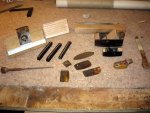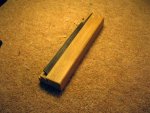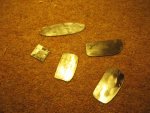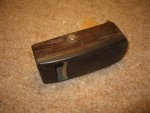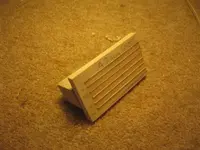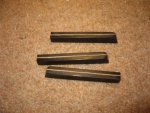This seems like a good place for this. We all know having the right tool(s) makes repairs and mods much easier. It's too bad most of us do not have a complete workshop with all the tools we sometimes need. I'm sure most of us have had to improvise at some time or another, I know I've used some unconventional tools to accomplish various tasks. Maybe some of you can share some of the ideas you have come up with to get the job done when you didn't have the right tool for the job.
I'll start with, recently I was changing the tuners on a guitar. The replacement tuners (machines) didn't fit exactly. The shaft was just a bit too large to fit through the holes in the head of the guitar. I know all the luthiers say I needed a reamer to enlarge the holes. What I used was a chainsaw file ($2.88 at Walmart) and gently filed the holes to the right size. Unconventional, maybe, but it worked as well as the more expensive tool would have.
NEXT...
I'll start with, recently I was changing the tuners on a guitar. The replacement tuners (machines) didn't fit exactly. The shaft was just a bit too large to fit through the holes in the head of the guitar. I know all the luthiers say I needed a reamer to enlarge the holes. What I used was a chainsaw file ($2.88 at Walmart) and gently filed the holes to the right size. Unconventional, maybe, but it worked as well as the more expensive tool would have.
NEXT...


